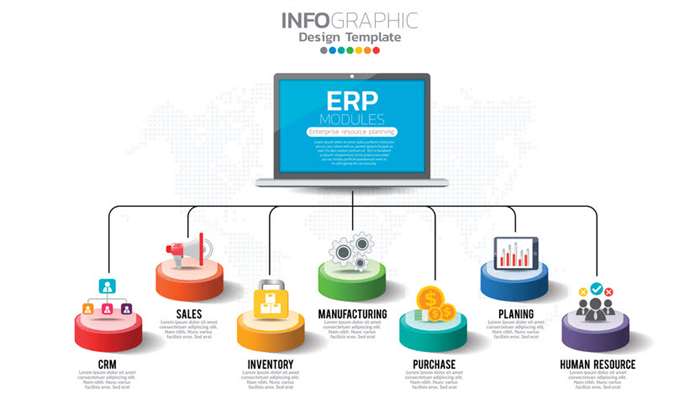Because integration testing can only begin after « all » of the modules have been defined, the testing team will have less time throughout the testing phase to execute. The Integration Test Case is distinct from other test cases in that it focuses primarily on the interfaces and data/information flow across the components. Priority should be given to integrating links over unit functions that have already been tested. These terms (stub & driver) come into the picture while doing Integration Testing. While working on integration, sometimes we face a situation where some of the functionalities are still under development.

The final integrated product remains the same, just the transition to reach there is a little different. Top down integration testing can be done in a couple of ways that resemble the popular tree traversing techniques in data structures. Conventionally, one may find the usage of stubs only applicable when the module is still under development. However, stubs are very important in top down integration testing, even if the developers have built the module. If we start using the developed module, we may not be able to identify whether the bug is in the sub-module or the one we are testing. In top down integration testing, you start from the central module that the end user would use after integrating it with other small modules.
Bottom Up Testing
Re-usability of code is one of the main benefits of the bottom-up approach. Part of this section is from the Perl Design Patterns Book.In the software development process, the top-down and bottom-up approaches play a key role. During the design and development of new products, designers and engineers rely on both a what is bottom-up testing bottom-up and top-down approach. The bottom-up approach is being utilized when off-the-shelf or existing components are selected and integrated into the product. An example would include selecting a particular fastener, such as a bolt, and designing the receiving components such that the fastener will fit properly.

The incremental tests are quite faster in comparison to the end to end testing process. We don’t get a chance to test interfaces and subsystems thoroughly before unifying the modules. Through this approach, you can choose a layer allowing minimal usage of drivers and stubs. The best thing to note is that developers would have to sit idle until every module is developed. This would also make it challenging to analyze the root cause of the defect.
Mobile App Testing
These new requirements may not be unit tested and hence system integration Testing becomes necessary. The purpose of Top-down integration testing is to view all the components from the top and move downward in a manner to check the system’s functioning before starting to build the sub-modules. It will help you to catch errors even before you start working on every module of your application system.
When you work on an application, many modules interact with each other to accomplish the task a user is trying to perform. The top-down approach often uses the traditional workshop or microfabrication methods where externally controlled tools are used to cut, mill, and shape materials into the desired shape and order. Micropatterning techniques, such as photolithography and inkjet printing belong to this category. Vapor treatment can be regarded as a new top-down secondary approaches to engineer nanostructures. Bottom-up emphasizes coding and early testing, which can begin as soon as the first module has been specified. This approach, however, runs the risk that modules may be coded without having a clear idea of how they link to other parts of the system, and that such linking may not be as easy as first thought.
Related Articles
Top down integration testing is a type of incremental testing where we move from top to down and keep integrating modules as we move ahead. To understand the concept of top down integration testing, we can construct a small example with familiar components used in a web application. Incremental testing is an integration testing approach where you can integrate the software module by module – one by one incrementally. This is a better approach than the big bang because it focuses on each module and smaller combinations. The only thing we need to remember here is to draw the diagram with logical modules only, i.e., the modules that will get connected in the application. Another approach contradictory to big bang integration testing is incremental integration testing.
If a large number of subsystems exist at the same level, bottom-up testing becomes similar to big-bang testing. It is here when sub-modules are not available to integrate and test, stubs become useful. The stubs act as the placeholders and function the same way as the sub-module.
Disadvantages of top-down management
This above–mentioned bottom up integration testing example helps you in an understanding bottom up integration testing tutorials in an easy way and let you decide as per your need for software testing. Bottom-up estimating can be a very accurate method to determine the definitive estimate of a project. It requires a certain amount of resources and an established work breakdown structure.

The expression « seeing the wood for the trees » references the two styles of cognition. This article may need to be rewritten to comply with Wikipedia’s quality standards. This is a new type of article that we started with the help of AI, and experts are taking it forward by sharing their thoughts directly into each section. This process is repeated until the component at the top of the hierarchy will not be tested. Study the Architecture design of the Application and identify the Critical Modules. A writer for 4+ years with QA and Engineering background, I have always liked to blend creativity with technology.
When to use the top-down approach
If a system is to be built from an existing system, this approach is more suitable as it starts from some existing modules. Top-down and bottom-up are both strategies of information processing and knowledge ordering, used in a variety of fields including software, humanistic and scientific theories , and management and organization. In practice, they can be seen as a style of thinking, teaching, or leadership. One limitation to this sort of testing is that any conditions not stated in specified integration tests, outside of the confirmation of the execution of design items, will generally not be tested. Explore the possibility to hire a dedicated R&D team that helps your company to scale product development.
- The bottom-up approach is newer and more flexible than the more formal top-down strategy, which is why it’s more commonly found in industries where disruption and innovation are a priority.
- When it comes down to it, effective managers know how to balance the efficiency of the top-down approach with the collaborative and creative advantages that come from the entire team.
- Modern software design approaches usually combine both top-down and bottom-up approaches.
- And this sequence can be continued if there exists another level of modules.
- At its foundation, Integration testing is the second level of testing right after Unit testing.
- Bottom-up testing is a type of integration testing that integrates modules from the bottom first and then moves upward in the control flow graph until all modules are tested.
- When tested individually in unit testing, it may not uncover any errors.
When each component or module works independently of an application, we need to check the dependent modules’ data flow, known as integration testing. Since process-related communication flows top to bottom in top-down companies, it’s easy for individuals and groups https://www.globalcloudteam.com/ to become siloed and eventually feel isolated. Create opportunities for communication across departments, teams, management levels, and even geographical locations to help ensure that your team members can build meaningful relationships with each other.
What is Bottom-Up Integration Testing?
Some of the popular tools, such as Selenium, Pytest, Testsigma, and Protractor, are all open source and offer several in-house options and use cases for testing purposes. However, you must have a thorough knowledge of Integration testing and its requirements before you jump to understanding its different approaches. Once Unit testing is over and you integrate separate modules to form a complete system, Integration testing comes into the picture. It follows certain specifications to examine the interaction and behavior of different modules as they come together to build a system. Here, we have concluded that the execution of top-down and bottom-up approaches is required to test the software or the application.